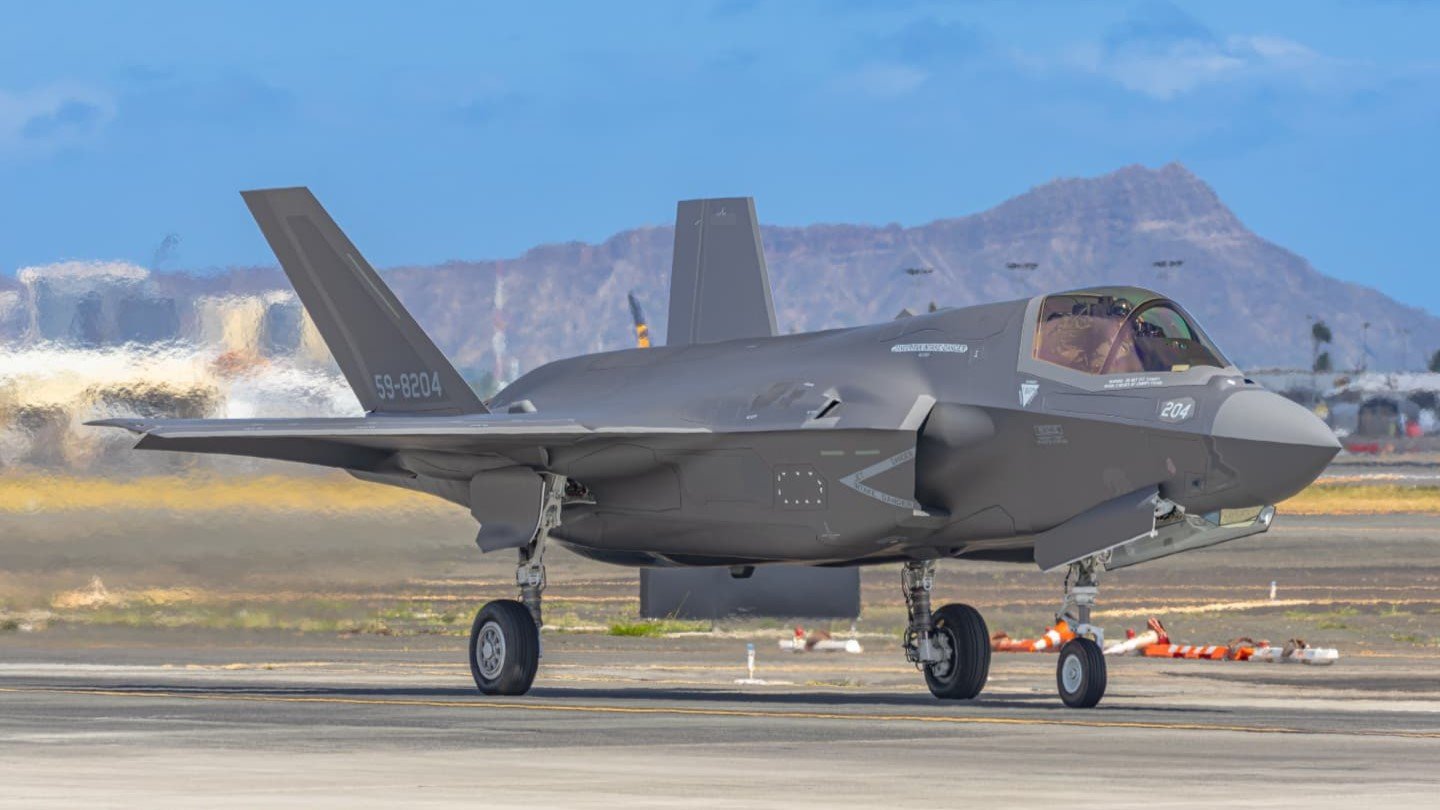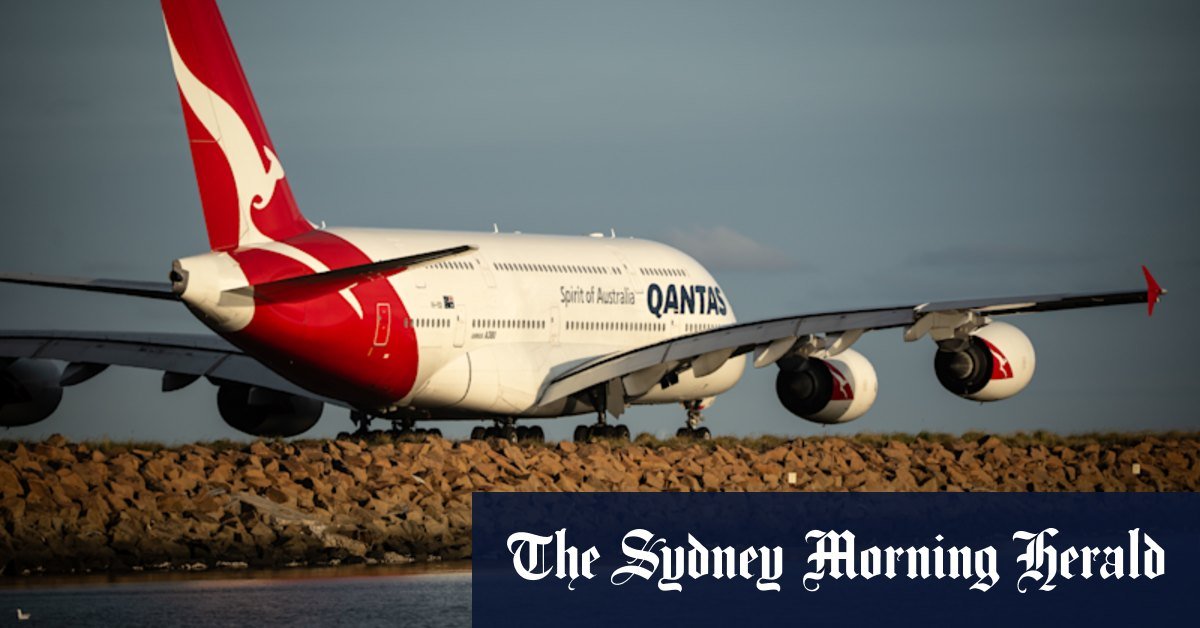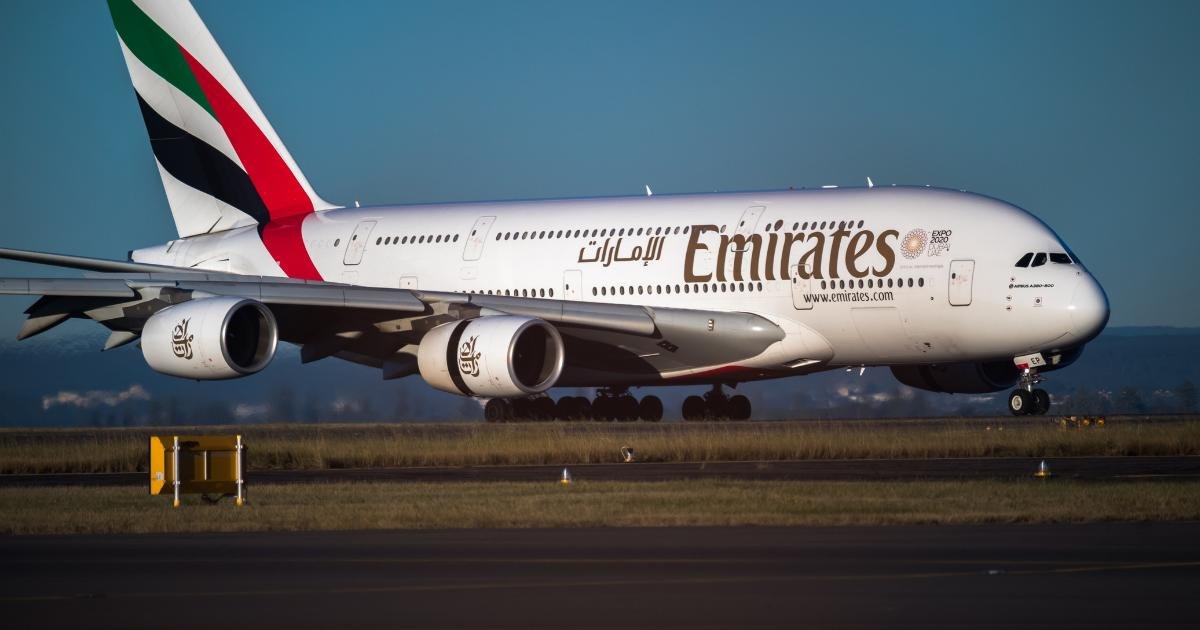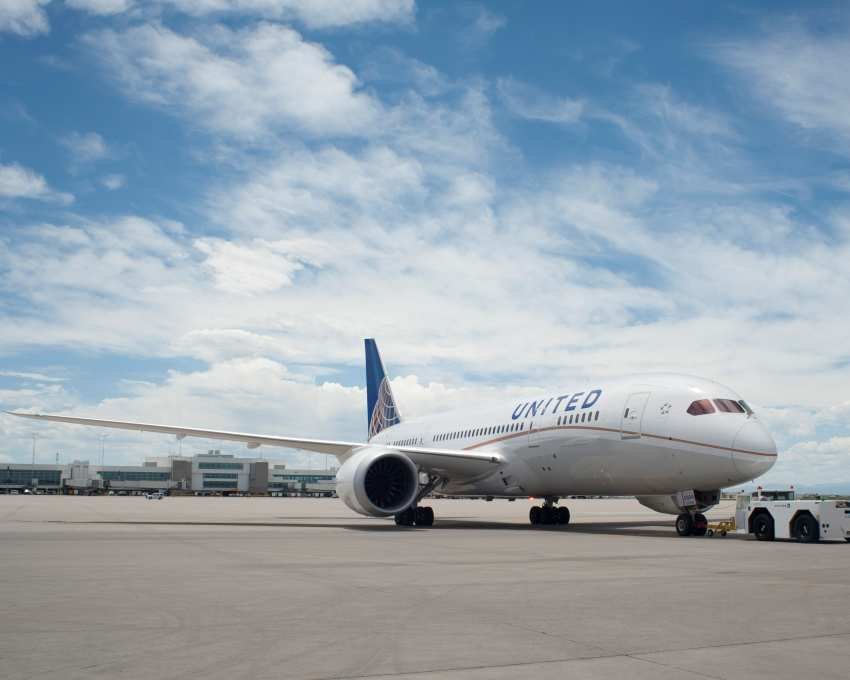Flight Buzz
First Japanese F-35B Stealth Jets Spotted En Route to Japan

After months of delay, the first Japanese F-35Bs are on the way to their new home and were spotted during a stop in Hawaii.
The first F-35B Lightning II STOVL (Short Take Off Vertical Landing) fighters for the Japan Air Self Defense Force (JASDF) are now en route to Japan, where they will be delivered on Aug. 7, 2025. The Japanese Ministry of Defense announced few days that four F-35Bs will arrive at Nyutabaru Airbase, and the aircraft were now spotted arriving at Joint Base Pearl Harbor Hickam (JBPHH), Hawaii, on Aug. 1.
While four F-35Bs were expected, only three are currently flying to Japan. The shots you can see in this article were taken by photographer @aeros808, who told us that the fourth jet is still in the U.S. The aircraft arrived in Hawaii flown by U.S. pilots and using the callsign AGILE, accompanied by two KC-46A Pegasus tankers with the callsign BORA.
Japan previously announced in January 2025 that the arrival of the first F-35Bs, which was planned to happen sometime during FY (Fiscal Year) 2024 (which ends on Mar. 31, 2025), has been postponed to sometime during FY2025. The aircraft will be assigned to a temporary F-35B unit which has been established to help with the introduction of the new aircraft.
On May 12, 2025, the first of 42 Japanese F-35B flew for the first time from Lockheed Martin Facility at NAS Joint Reserve Base Fort Worth, Texas.
Japan’s F-35B acquisition
While initially it only acquired F-35As, Japan decided in 2018 to procure 42 F-35Bs in order to strengthen its capabilities and operate from its two aircraft carriers, small airstrips and remote islands. These 42 aircraft are part of the larger total of 147 F-35s that Japan plans to operate.
The plan was formally approved in Japan’s 2019–2023 Mid-Term Defense Program, which mentioned that 18 of the then-planned 47 F-35s would have been STOVL (Short Take-Off Vertical Landing) variants. The program of record for the F-35B was later increased to 42 aircraft.
The procurement was approved by the United States in 2020, and included both 63 F-35As and the 42 F-35Bs, for a total of 105 aircraft. According to the Defense Security Cooperation Agency’s notification to Congress, the sale was reported worth about $23.11 billion.
With 147 aircraft in service, Japan would become the second-largest operator of the F-35 after the United States. Japan also hosts in Nagoya one of three final assembly and check-out (FACO) facilities for the F-35 Lightning II program.
However, Japan’s F-35Bs will be produced in the U.S. at Lockheed Martin’s production facility in Fort Worth, Texas. The FACO facility continues to perform the final assembly and check-out of F-35A aircraft to be delivered to the JASDF, as well as Maintenance, Repair, Overhaul and Upgrade (MRO&U) activities for the North Asia region.
The F-35B in Japanese service
Plans are in place to operate the STOVL fighter jets from the JMSDF’s two Izumo-class DDHs (Helicopter-carrying Destroyers), the JS Izumo and JS Kaga, which are currently undergoing conversion to allow F-35B operations. To better prepare for the arrival of the new aircraft, Japan is studying F-35s operations from other navies who already operate the type, such as the Italian Navy and Royal Navy.
The F-35B has undergone tests with Japanese vessels twice, with the Izumo conducting flight ops in 2021, while the Kaga just recently had a F-35B land on its deck. Both of these tests were conducted with non-Japanese jets and pilots. The Izumo is set to start F-35B operations in 2027, while the Kaga will induct it into service a year later in 2028.
Interestingly, although the aircraft are planned to operate from these JMSDF vessels, the F-35B itself will be operated by the JASDF. The service plans to operate up to 105 F-35A CTOL (Conventional Take Off and Landing) and 42 F-35B V/STOVL fighter jets alongside their previous inventory of F-15J/DJs and F-2A/Bs.
Japan plans to station the first batch of F-35Bs at Nyutabaru Air Base, which is located in the southern part of the island of Kyushu, due to the its close proximity to the home port of the JS Kaga in JMSDF (Japan Maritime Self Defense Force) Kure, in Hiroshima prefecture. A temporary squadron has been established in preparation for the induction of the F-35B at Nyutabaru.
“Eight aircraft are scheduled to be delivered during fiscal year 2025, and the delivery date for the remaining four aircraft is still being adjusted,” recently confirmed the MoD. Additionally, U.S. pilots will conduct demonstration flights at Nyutabaru in September in an attempt to mitigate concerns of local residents over noise caused by vertical landings.
A big thank you to @aeros808 for the photos he shared with us and the details. Make sure to check out his page on Instagram for more!
Flight Buzz
MP flight policy review to end bureaucrats accepting flight upgrades

“When accepted, upgrades should be declared consistent with the [public service] guidance on gifts and benefits, and … officials must not accept any upgrade to first class,” the report states.
The department also said it would publish travel usage and expenditure reports, including the carriers used and costs incurred, from early next year.
“These transparency recommendations are intended to provide greater accountability to the public on Commonwealth travel spend,” the report states.
The report did not recommend limiting access to membership to lounges, despite calls from some parliamentarians for the perk to be banned.
Independent MPs, including Kate Cheney and Helen Haines, gave up their Chairman’s Lounge membership in the furore following the release of Aston’s book – The Chairman’s Lounge – last year. Others, including Allegra Spender and David Pocock, have called for the memberships to be banned for MPs.
Senior regulators, including top staff at the Australian Competition and Consumer Commission, resigned from the Chairman’s Lounge in November.
The government has rejected other recommendations, including a call for public servants to be required to use economy rather than business class on flights of less than three hours, which could save up to $4 million a year on domestic flights.
Loading
“While there can be operational requirements to use business class on longer flights where government officials are expected to rest on the flight and arrive and commence work immediately, there are few operational requirements for shorter flights, especially those under 3 hours,” the report states.
The department said in a document responding to the report that the “current settings are appropriate”.
A recommendation for contracted travel management companies to be required to offer a broad range of options for international flights and “strongly encourage” the use of existing flight credits before spending more, would be supported, the department said.
Albanese said in October last year that his flight upgrades had been documented appropriately.
“Every single thing has been declared, every single thing has been declared, which is why it has been reported on, and it is appropriate that those declarations occur,” he said. Other politicians, including Nationals senator Bridget McKenzie, had to apologise and declare flight upgrades that they had previously omitted.
Qantas and Finance Minister Katy Gallagher’s office were contacted for comment.
Cut through the noise of federal politics with news, views and expert analysis. Subscribers can sign up to our weekly Inside Politics newsletter.
Flight Buzz
Emirates to start fourth daily flight from Dubai to Gatwick

The new route, named EK069/070, will launch on February 8, 2026, and will offer more travel options for passengers.
The extra service increases the airline’s total flights to London to 12 per day, spread across Gatwick, Heathrow, and Stansted.
Flight EK069 will take off from Dubai at 5.05pm, landing at Gatwick at 8.50pm.
The return flight, EK070, will depart Gatwick at 11.55pm, arriving in Dubai at 11am.
The new service will be the last flight of the day between the two cities, offering convenient departure and arrival times for passengers.
Arriving in Dubai at 11am allows tourists to check into their hotels and start their activities early.
The late evening departure from Dubai gives passengers more time to wrap up business meetings, shop, or enjoy leisure activities before heading to London.
The Airbus A350-900 aircraft, used for the new service, will have a three-class configuration.
This includes 32 lie-flat Business Class seats in a 1-2-1 layout, 28 Premium Economy seats, and 238 Economy Class seats.
Passengers can also expect next-generation products and services, including wireless charging in Business Class, electric window blinds, digital inflight menus on ice screens and more.
Gatwick will be the second UK airport to welcome Emirates’ new A350 aircraft, after Edinburgh.
With the addition of the fourth daily flight, Emirates will now operate 140 weekly flights to eight major UK airports: Gatwick, Heathrow, Stansted, Manchester, Birmingham, Newcastle, Glasgow and Edinburgh.
These flights will be operated using a mix of A350s, A380s, and Boeing 777s.
Emirates’ new A350 aircraft also serves several global cities, including Lyon, Bologna, Dammam, Mumbai, Edinburgh, Bahrain, Colombo, Kuwait, Muscat, Tunis, Amman, Istanbul and Ahmedabad.
Travellers can book tickets on the Emirates website, the Emirates App, at Emirates retail stores, via the Emirates contact centre, or through travel agents.
The new flight aims to provide more flexibility and convenience to passengers travelling between London and Dubai.
Flight Buzz
United Airlines’ New Flight Rebooking System Sparks Outrage: Travelers Criticize Lack of Support After Delayed Flights and Frustrating Online-only Solutions

Wednesday, August 6, 2025
In recent years, United Airlines has prided itself on delivering improved customer service, offering travelers an experience that exceeded its competitors. However, this reputation is now being challenged as the airline faces a backlash following a particularly frustrating customer experience. The controversy began after a flight delay from Quebec City, which led to the traveler and their family missing their connecting flight at Newark International Airport.
The airline’s new rebooking system, which had been designed to streamline the customer service process, is now being slammed for leaving travelers stranded and unsupported. While the shift to digital-first solutions had promised efficiency, the reality has been far less favorable. The incident has sparked concerns about the growing reliance on technology at the expense of personalized service and human interaction—an issue that could have far-reaching consequences for the airline industry, particularly in how travelers experience disruptions.
The Shift from Personalized to Impersonal Customer Service
Traditionally, United Airlines was known for its quick, hands-on assistance during delays and flight disruptions. Travelers could typically expect immediate help from customer service agents, who would work swiftly to find a solution. Unfortunately, this once highly praised service model has been replaced by a digital-only system that is leaving passengers frustrated and dissatisfied.
In the Quebec City to Newark incident, the traveler’s family faced a significant delay during customs, causing them to miss their connecting flight by mere minutes. At what should have been a critical moment for customer service, the family was instead given a QR code and directed to a slow, impersonal rebooking website. They were left with no clear instructions on what to do next and no immediate human contact to resolve their situation.
While digital rebooking systems are often seen as more efficient and cost-effective for airlines, they can also alienate travelers when problems arise. In the case of United’s new system, the lack of real-time, human support made the rebooking process longer and more frustrating, with travelers experiencing significant delays in communication and receiving only generic responses from the airline.
Digital-Only Rebooking: A Growing Trend with Significant Consequences
The trend toward using technology to handle customer service is becoming more widespread across the airline industry. However, as airlines like United embrace this model, they risk alienating travelers who expect a more personalized experience. The desire for human interaction during stressful travel situations is not just a luxury; it’s a crucial aspect of maintaining trust and loyalty.
Digital-only rebooking systems, like the one used by United, are meant to streamline the process, saving time and costs for the airline. In theory, they provide passengers with the ability to manage their own rebooking without waiting in line or speaking to a customer service representative. However, in practice, tech-heavy solutions often lead to long waits, confusion, and a general sense of being abandoned in times of crisis.
In this case, after missing their connecting flight, the family was left to deal with a slow and unresponsive website. Instead of receiving immediate rebooking options or a clear path forward, they were forced to navigate a cumbersome process with minimal guidance. This lack of support is especially problematic in high-stress situations, where travelers need quick assistance to avoid further disruption to their plans.
Effect on the Travel and Tourism Industry: What This Means for Airlines and Customers
As travel disruptions continue to affect passengers worldwide, airlines need to reconsider how they handle customer service during these times. The increasing reliance on automated systems may help airlines cut costs and reduce the need for staff, but it also comes at the expense of personalized service. Customers expect more than just a quick solution to a problem—they expect empathy, understanding, and, most importantly, human interaction.
The backlash United Airlines is facing over its rebooking system highlights a broader issue within the travel and tourism industry. As travelers become more accustomed to using digital tools, they expect airlines to balance technology with a personal touch. Airlines that fail to provide a balance between the two risk losing customer loyalty, which could have long-term repercussions on the industry’s growth.
The trust that travelers place in airlines is not easily regained once broken. Delayed flights and missed connections are common occurrences in the travel industry, but the manner in which they are handled can make or break a customer’s experience. United Airlines, with its previously strong reputation for customer service, may now find itself in a difficult position as it grapples with the fallout from this rebooking debacle.
A Case for Balanced Innovation: Can Airlines Improve the Tech-Human Experience?
While technology is undeniably an essential part of the modern travel experience, the human element remains crucial, especially when things go wrong. The key takeaway from United Airlines’ recent incident is that airlines must find a way to balance innovation with the needs of their passengers. Digital tools should enhance, not replace, the human connection that customers expect when dealing with disruptions.
To avoid further damage to their reputation, United Airlines and other airlines adopting digital-only systems should consider implementing hybrid models where technology can assist customers, but human agents are readily available to step in when needed. For example, automated systems could provide travelers with initial options, but if a problem arises, passengers should be able to quickly access real-time support from a representative who can provide immediate assistance.
Moreover, airlines should focus on improving their online interfaces to make them more intuitive, ensuring that travelers can find solutions quickly without feeling lost or frustrated. A seamless blend of technology and human service would likely provide the best of both worlds—offering the convenience of automation while maintaining the personal touch that passengers need during times of uncertainty.
The Broader Implications: What This Means for the Future of Travel
United Airlines’ new rebooking system fiasco may be an isolated incident for now, but it reflects a larger trend in the travel industry. As airlines look to cut costs and streamline operations, many are moving toward digital-first models. While these systems have their benefits, they must be implemented with care to avoid alienating customers who still value the personal touch that has been a hallmark of quality service for years.
As travel and tourism continue to evolve, the industry needs to strike a balance between cutting-edge technology and personalized customer service. Innovations in tech should aim to make the travel experience easier and more convenient but must not replace the empathetic, human connections that passengers expect. The success of any airline or travel company in the future will depend on its ability to provide a seamless blend of both, ensuring that customers feel supported and valued at every step of their journey.
Conclusion: Restoring Trust Through Customer-Centric Solutions
The experience shared by a United Airlines passenger highlights a growing concern in the travel industry: technology is not a substitute for human care. While digital solutions can improve certain aspects of the travel process, they should never replace the human element that is essential in maintaining trust and customer satisfaction. In this case, United Airlines must recognize that a seamless customer experience requires both innovative tech and personal support, especially in times of disruption.
To rebuild customer loyalty and trust, airlines must carefully consider how they incorporate technology into their customer service strategies. A balance between automation and real-time assistance is key to ensuring that passengers feel supported—not just processed—when things go wrong. By prioritizing a customer-centric approach that integrates the best of both worlds, the travel industry can avoid further backlash and ensure that passengers’ needs are met with both efficiency and empathy.
Image Custody: United Airlines
-

 Brand Stories2 weeks ago
Brand Stories2 weeks agoBloom Hotels: A Modern Vision of Hospitality Redefining Travel
-

 Brand Stories2 weeks ago
Brand Stories2 weeks agoCheQin.ai sets a new standard for hotel booking with its AI capabilities: empowering travellers to bargain, choose the best, and book with clarity.
-

 Destinations & Things To Do2 weeks ago
Destinations & Things To Do2 weeks agoUntouched Destinations: Stunning Hidden Gems You Must Visit
-

 Destinations & Things To Do2 weeks ago
Destinations & Things To Do2 weeks agoThis Hidden Beach in India Glows at Night-But Only in One Secret Season
-

 AI in Travel2 weeks ago
AI in Travel2 weeks agoAI Travel Revolution: Must-Have Guide to the Best Experience
-

 Brand Stories1 month ago
Brand Stories1 month agoVoice AI Startup ElevenLabs Plans to Add Hubs Around the World
-

 Brand Stories4 weeks ago
Brand Stories4 weeks agoHow Elon Musk’s rogue Grok chatbot became a cautionary AI tale
-

 Brand Stories2 weeks ago
Brand Stories2 weeks agoContactless Hospitality: Why Remote Management Technology Is Key to Seamless Guest Experiences
-

 Asia Travel Pulse1 month ago
Asia Travel Pulse1 month agoLooking For Adventure In Asia? Here Are 7 Epic Destinations You Need To Experience At Least Once – Zee News
-

 AI in Travel1 month ago
AI in Travel1 month ago‘Will AI take my job?’ A trip to a Beijing fortune-telling bar to see what lies ahead | China

You must be logged in to post a comment Login